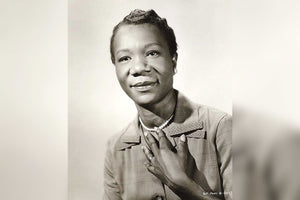Date of Birth: November 4, 1942
Who is Patricia Bath?
Dr. Patricia Bath was an ophthalmologist, innovator, philanthropist, and scholar from the United States. She was widely recognized as the creator of laser cataract treatment and the first African American female physician to be granted a medical patent.
Patricia E. Bath was born and raised in Harlem, a community known for its crime and harsh living. Bath's father, Rupert, was a Trinidadian refugee and the first black subway train driver in New York City. Gladys, her mother, was a housewife and housekeeper who descended from African slaves and Cherokee Native Americans.
Five Facts about Patricia Bath
- Bath received her M.D. with honors in 1968, and she also received the Outstanding Student Award in Ophthalmology from Edwin J. Watson Prize.
- During her service at UCLA's Jules Stein Eye Institute, she was the first female to become a faculty member in the Department of Ophthalmology.
- Bath founded the AIPB in 1976 with her colleagues. The organization aimed to establish eyesight as a fundamental human right.
- Bath developed the Laserphaco device in 1986, which improved cataract surgeries.
- When she patented her cataract surgery device in 1988, she became the first female physician with an African American background to earn a patent in the medicinal world.
Famous Quote from Patricia Bath
"My love of humanity and passion for helping others inspired me to become a physician."
Patricia Bath Biography
Early Childhood
Patricia E. Bath was born on November 4, 1942, in a middle-class family. Rupert, her father, was a newspaper writer and trader, and Gladys, her mother, was a housewife.
Her father was a Trinidadian immigrant who previously worked as a subway train driver in New York City. He later became a newspaper distributor. Her mother, on the other hand, was a descendent of African slaves and Cherokee Indigenous People.
She learned about humanity and science from both her parents, who raised in her a solid set of values. She was taught the importance of family above all else, self-reliance, and a thirst for knowledge.
Bath's father taught her about the delights of travel and the importance of experiencing other cultures. Her mother sparked the little girl's passion for science by getting a chemistry kit for her.
Bath and her brother went to Charles Evans Hughes High School in New York City's Chelsea district. She was very passionate about science. She received a National Science Foundation scholarship while still a teenager.
Career
From 1970 to 1973, Bath took her ophthalmology training at New York University. She then went to Columbia University where she began her Corneal training program that specialized in corneal transplant surgery and keratoprosthesis procedures.
The next year, she relocated to California to serve as an assistant professor of surgery at two famous universities: Charles R. Drew University and UCLA. She achieved the level of associate professor at both universities. Also, she was the first female faculty member in the Ophthalmology Department at the Jules Stein Eye Institute where she joined in 1975.
Bath co-founded the American Institute for the Prevention of Blindness (AIPB) in 1976. She later helped establish the Ophthalmology Residency Training program at UCLA-Drew in 1983. Bath was a UCLA professor for many years until retiring in 1993.
Besides, she has taught at several medical schools, namely Howard University School of Medicine, and has released multiple publications on her studies and discoveries.
Achievements
Bath's commitment to cure and prevent blindness inspired her to create the Cataract Laserphaco Probe, which was patented in 1988. The probe was designed to utilize the energy of a laser to swiftly and painlessly melt cataracts from clients' eyes.
Bath's device replaces the more conventional way of removing the plaques with a grinding, drill-like instrument. The equipment is now used to cure blind individuals all over the world.
Bath, as an AIPB delegate, has engaged in humanitarian expeditions to impoverished nations, where she has treated a large number of people. She has even traveled around the planet with her beautiful daughter, who is also pursuing a medical career.
One of her greatest experiences as a doctor was flying to North Africa where she helped a lady who had been blind sighted for three decades.
The AIPB accomplishes much of its work through ophthalmic assistants who are educated in departments at major universities. In addition, the Institute encourages international initiatives to supply newborn babies with anti-infection eye drops.
Bath became an honorary member of the UCLA Medical Center's medical personnel after retiring from her post there. She was honored as "Howard University Pioneer in Academic Medicine" the following year.
Bath has acquired five unique patents for her creations so far. Bath's inventions enabled her to restore sight to patients who had been sighted for a long period.
Patricia Bath’s Death
Bath died on May 30, 2019 at the age of 76 after suffering from complications of cancer. She met her death while at the University of California San Francisco.
![]() Fast Shipping
Fast Shipping![]() Subscribe to our Newsletter
Subscribe to our Newsletter![]() 🌟 New Global Competition 🌟
🌟 New Global Competition 🌟















